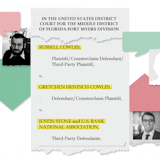George Bonga was unflappable — even when folks Up North threatened to burn his trading post and wreck his canoes.
A 19th‑century North Woods fur trader, translator, canoe guide, storyteller and Leech Lake lodge owner, Bonga found himself in the middle of Minnesota's first murder case in 1837.
Alfred Aitkin, 21, who ran a trading post on what is now Cass Lake, had been fatally shot by an Ojibwe man involved in a love triangle that Aitkin tried to squelch.
Aitkin's father, William, was a big-shot trader and namesake of the county and town in central Minnesota. Alfred's mother was Ojibwe. The elder Aitkin asked Bonga to track down the suspect in his son's death, Che-ga-wa-skung, after he escaped and the initial search party failed to find him.
Son of a black father and Ojibwe mother, Bonga spoke French, English and Ojibwe. He stood 6-foot-6 and was a third-generation backwoodsman famous for singing voyageur songs while carrying hundreds of pounds of pelts and goods through northern Minnesota's swampy, mosquito-thick portage trails.
After a posse failed to track down Che-ga-wa-skung, Bonga headed out in the subzero chill of January 1837. Six days later, he returned with the suspect, tied to a dog sled, and transported him 250 miles to Fort Snelling.
Bonga warned William Aitkin that Ojibwe in the area were angry about the arrest, threatening arson and vandalism if Che-ga-wa-skung was hanged.
"For my part," Bonga wrote Aitkin, "I don't think they are really in earnest in these words."



